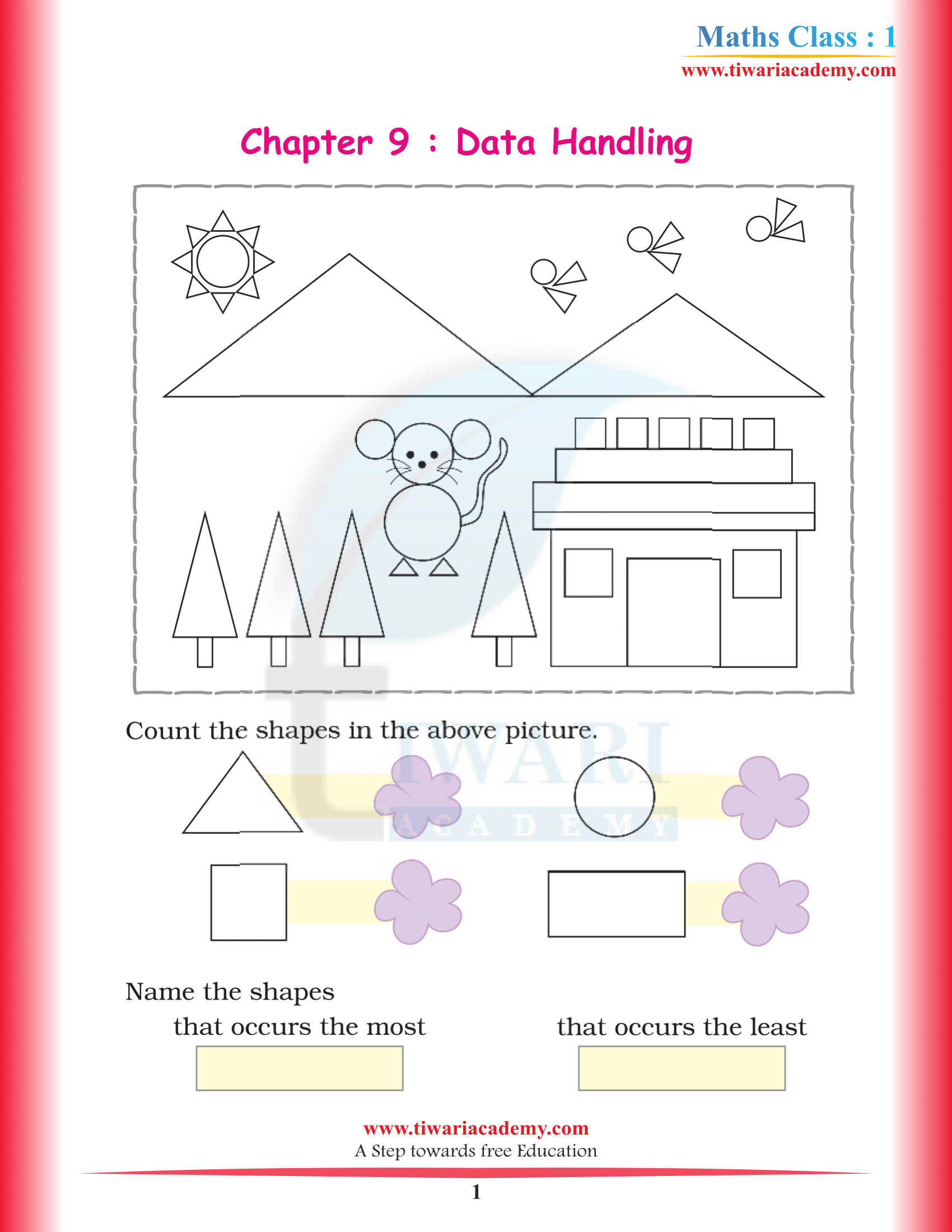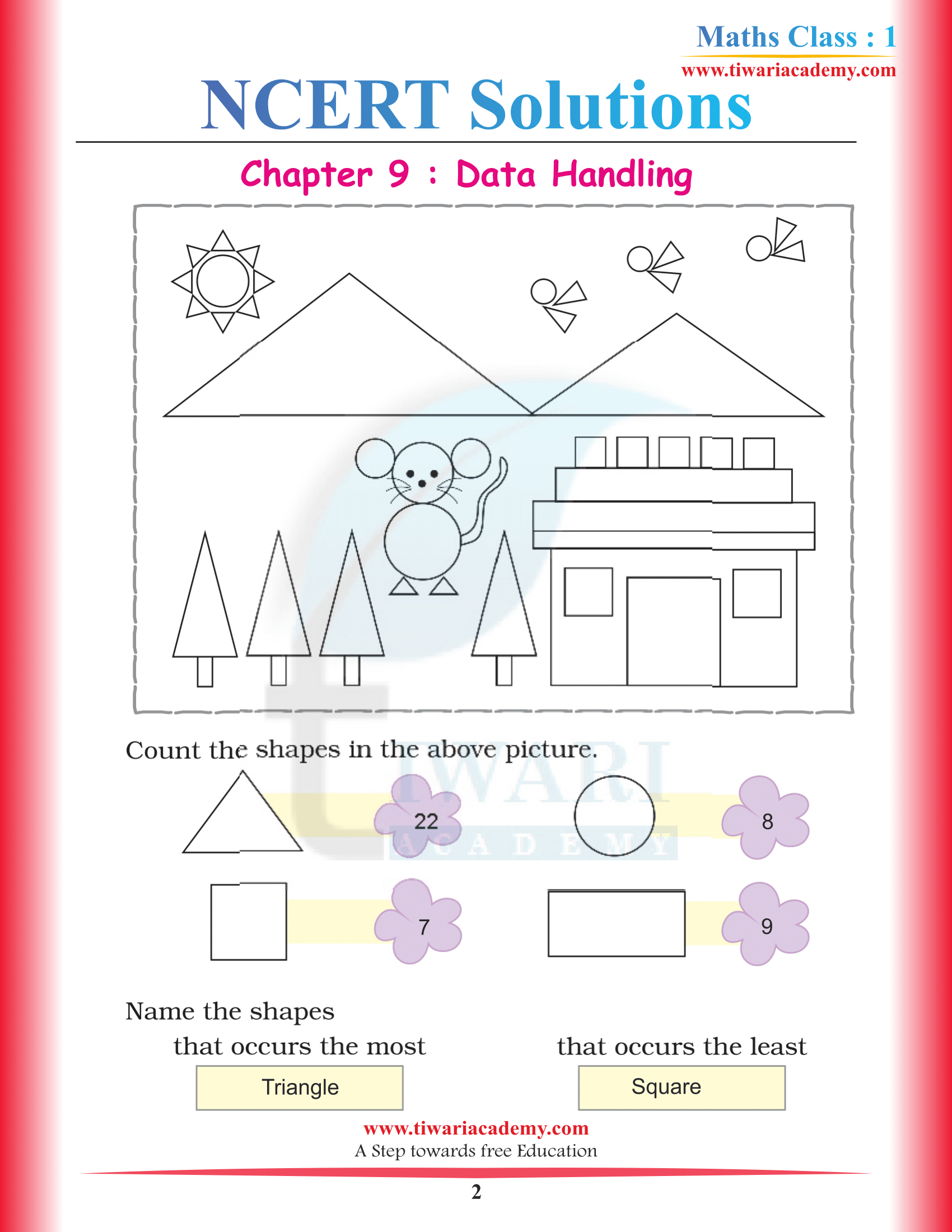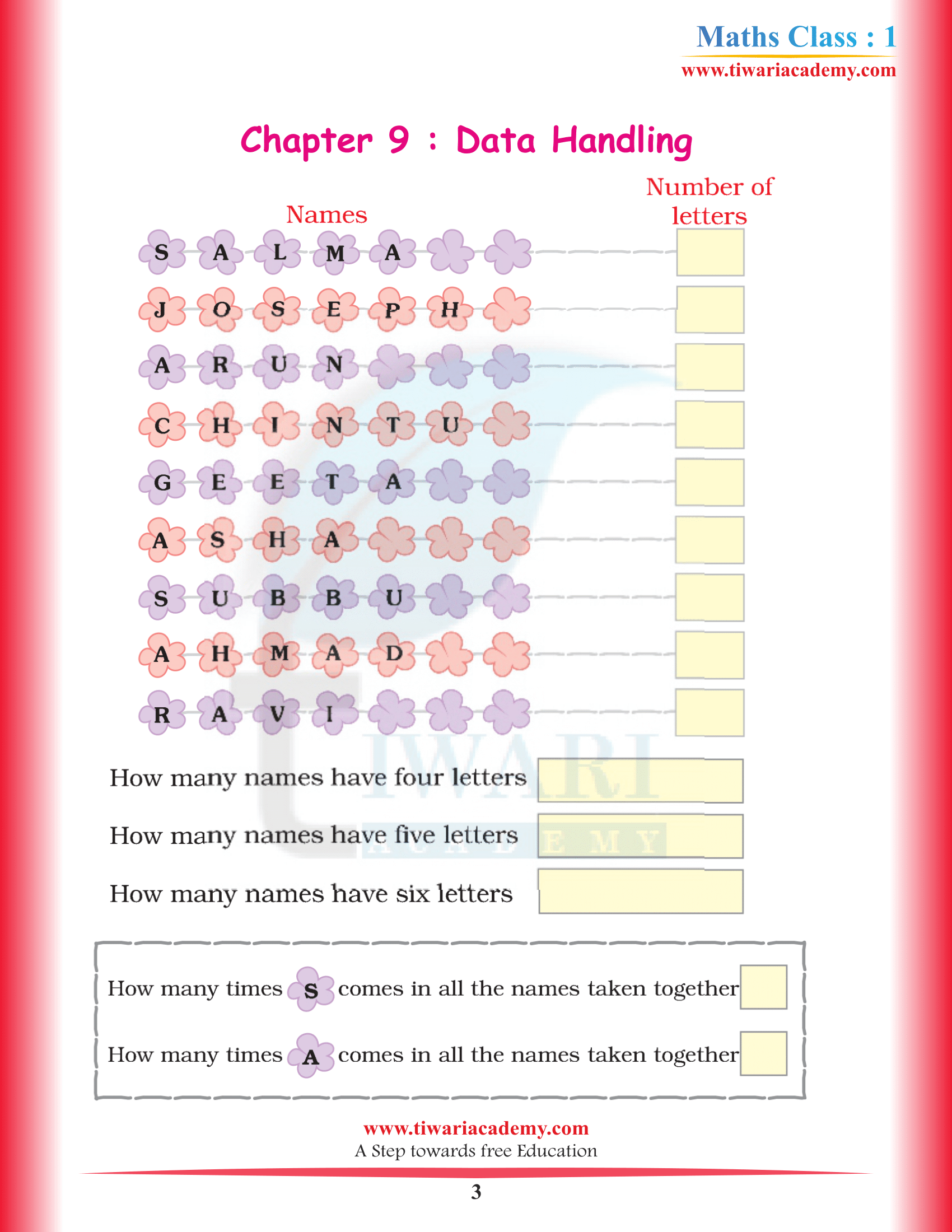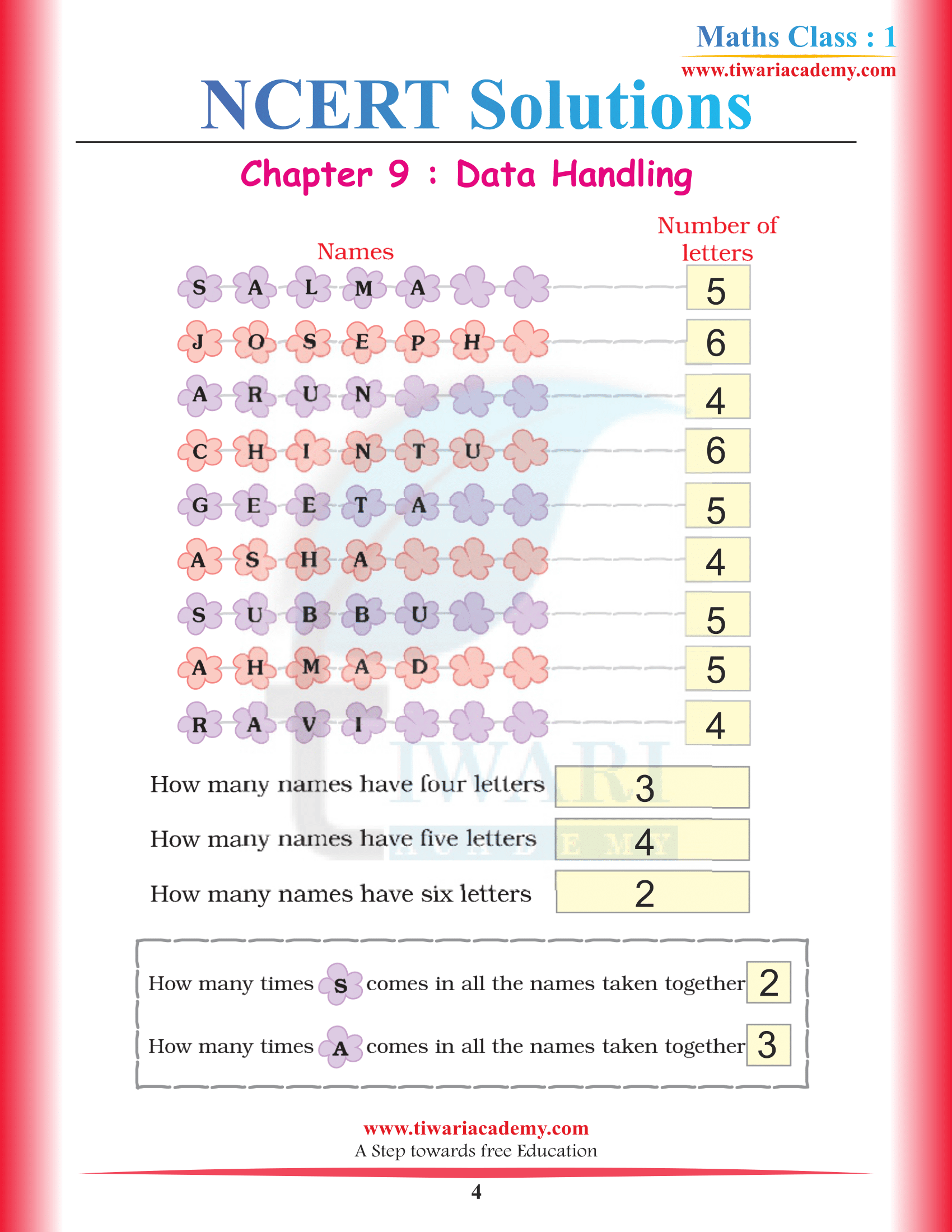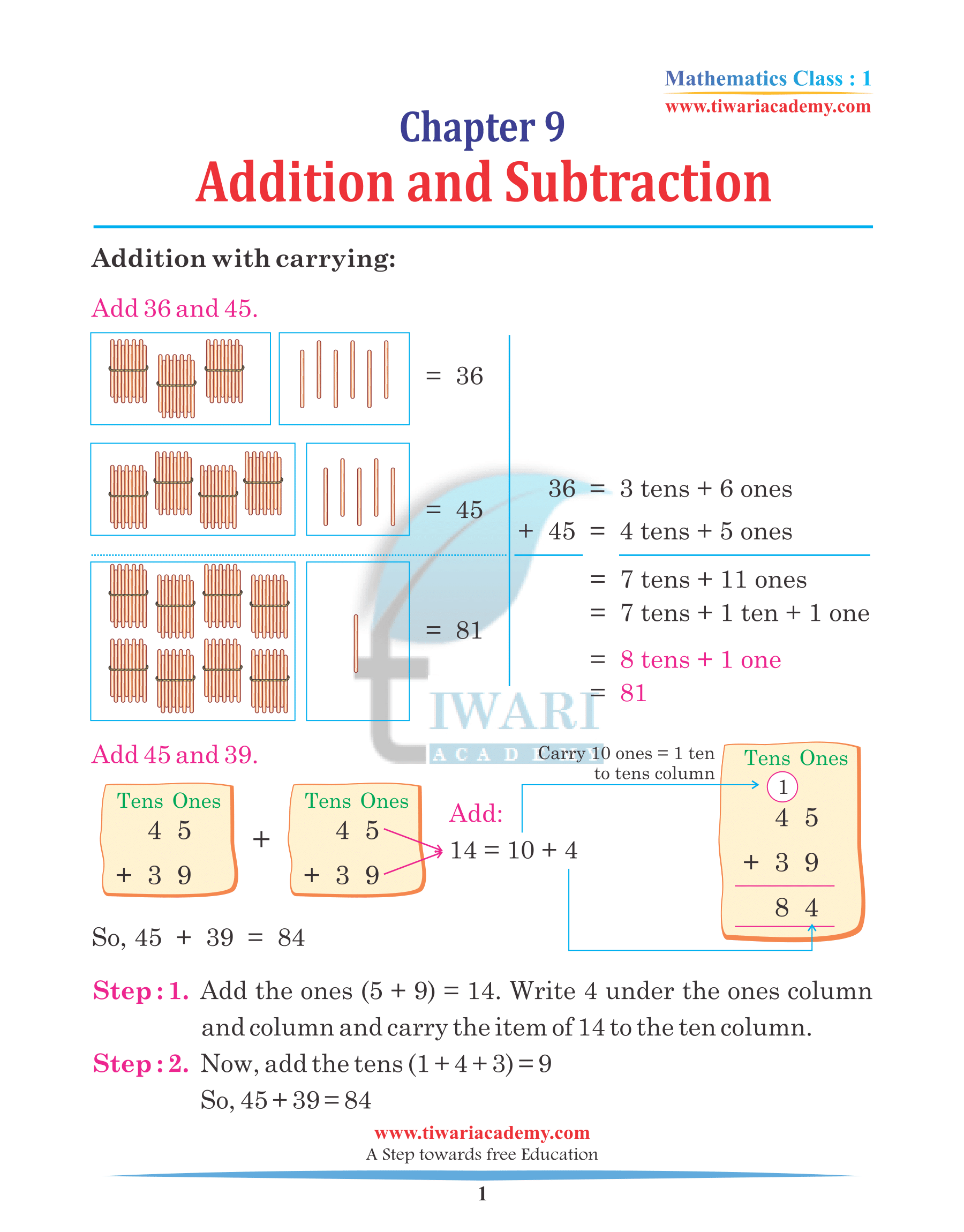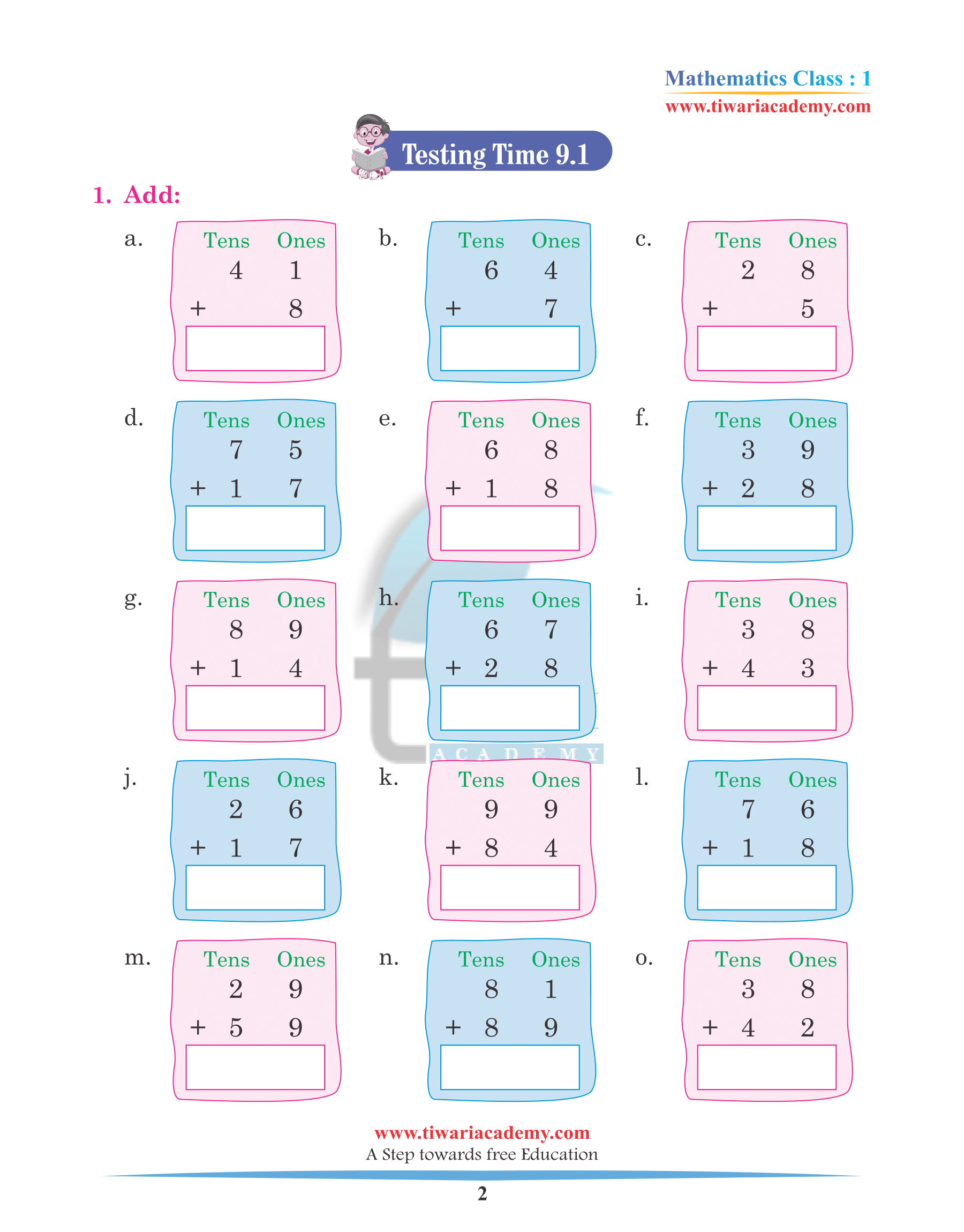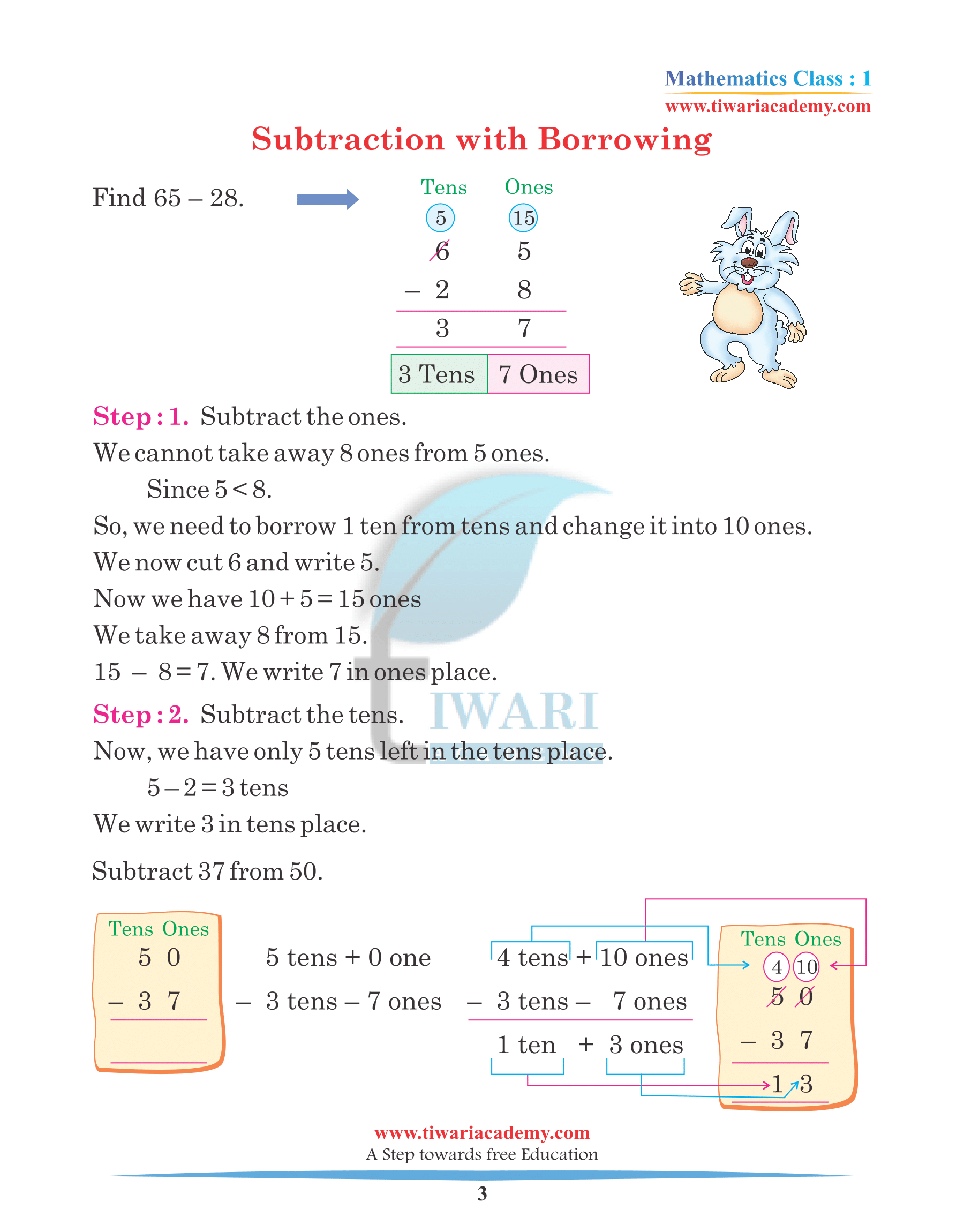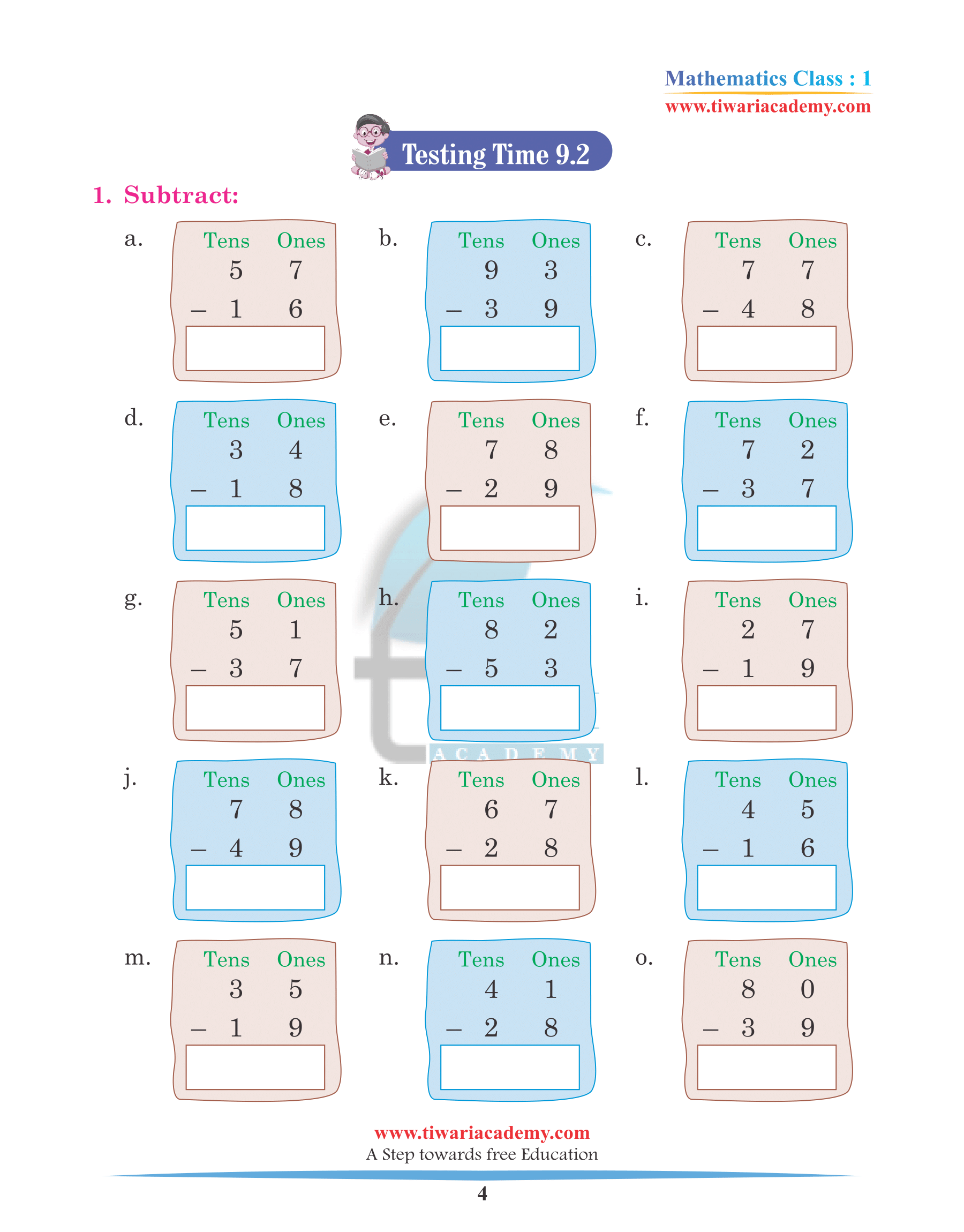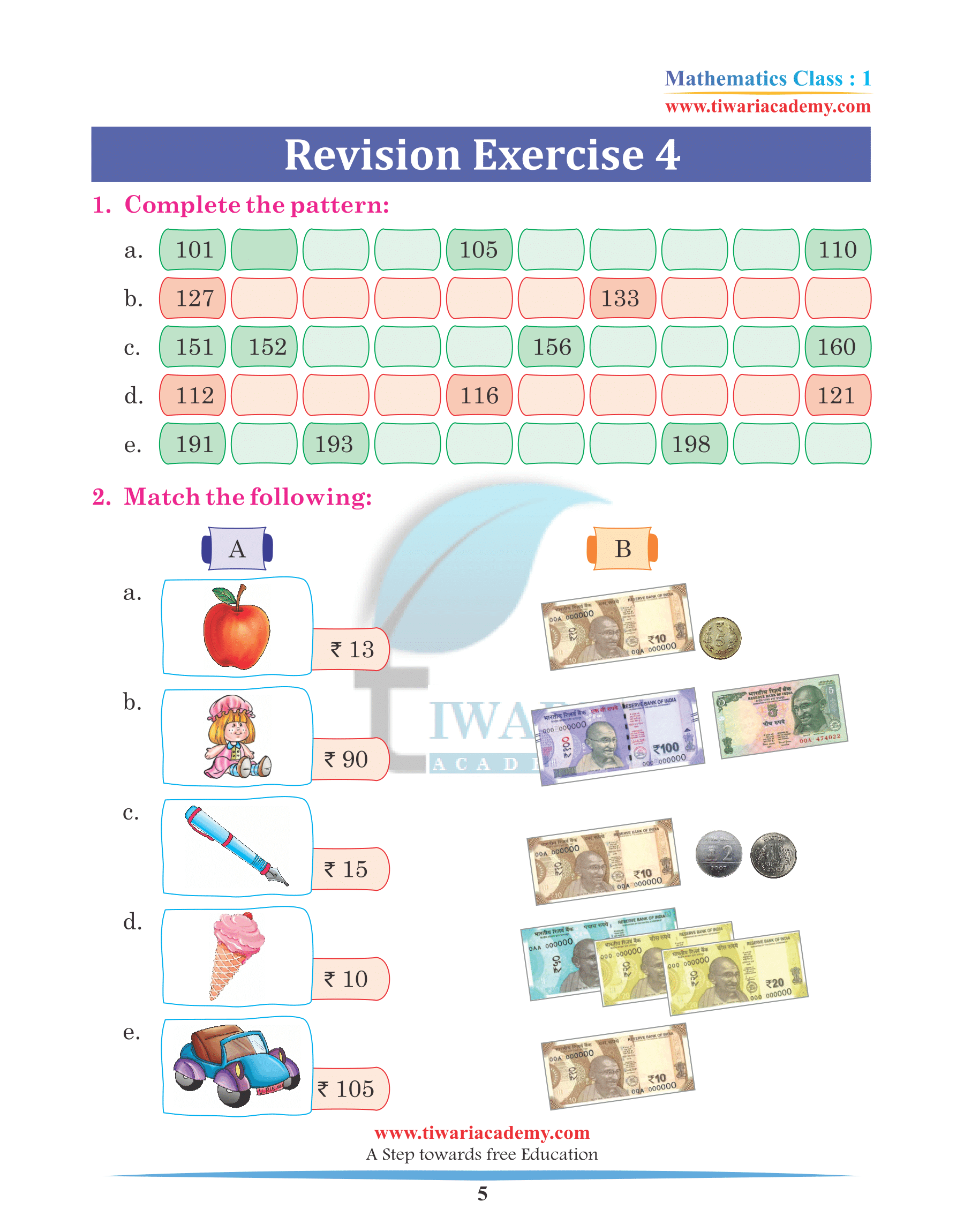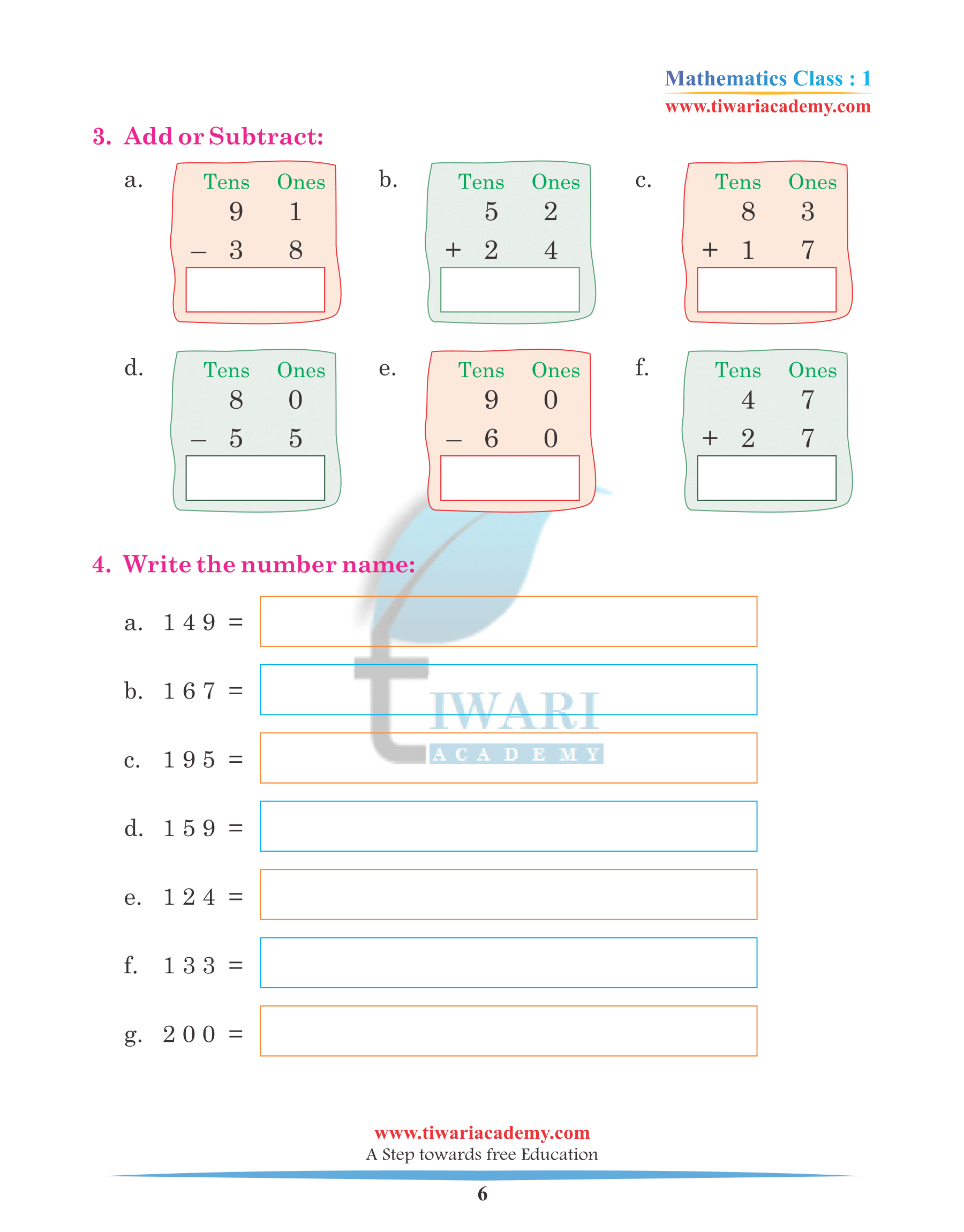NCERT Solutions for Class 1 Maths Chapter 9 Data Handing in Hindi and English Medium all question answers updated for new academic session 2025-26 CBSE and State Board Students. All the questions are solved step by step using simple methods so that students of standard 1 can understand easily. After completing the Chapter from NCERT Textbook, students should get revision through Revision book given to download in PDF file format.
Class 1 Maths Chapter 9 Data Handing
Class 1 Maths NCERT Chapter 9, Data Handling, introduces young students to the foundational concepts of data collection, organization, representation, and simple interpretation.
NCERT Solutions for Class 1 Maths Chapter 9
NCERT Solutions for Class 1 Maths Chapter 9 Data Handing
It’s the students’ first exposure to the world of data, an area of study that becomes increasingly relevant and complex as they advance in their education. This chapter helps in cultivation of observation skills. By grouping and classifying objects based on characteristics, students begin to develop their observation skills, discerning similarities and differences.
Class 1 Maths Chapter 9 help to improve Critical Thinking and Comparison. Representing data visually helps students understand concepts like more than, less than, or equal to. This fosters critical thinking skills and lays the foundation for future mathematical comparisons. Data is everywhere in the modern world. By introducing data handling early on, students can relate mathematics to their daily lives, understanding the relevance and applicability of what they’re learning.
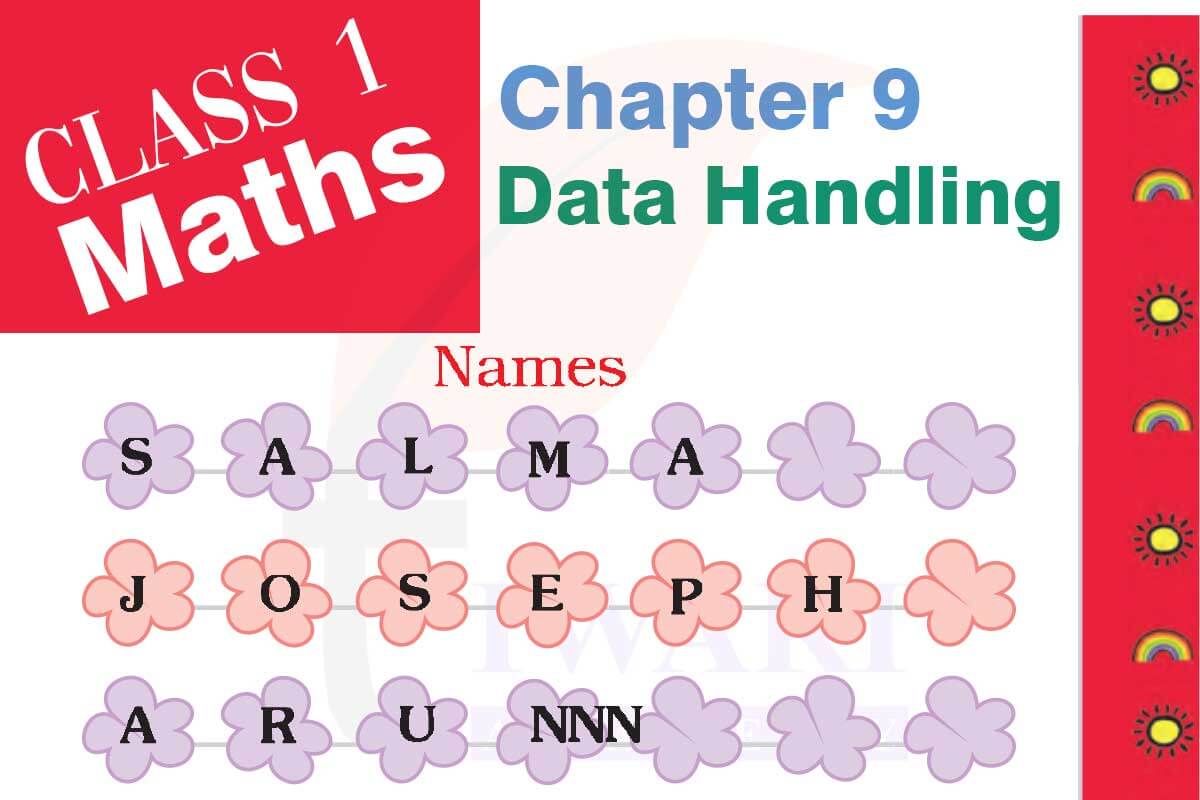
Data Handling
Data handling sound big isn’t it? But No, this is not that big of a challenge you might think of it. Instead, it is fun collecting the date and you might also need to color the shapes given in there. So while counting the data you can also have fun with it.
Class 1 mathematics chapter 9 is a foundation stone for advanced study. As students’ progress through school, they’ll encounter more complex data handling topics, including statistics, probability, and advanced data interpretation. Having a solid grasp of the basics from Class 1 will support their understanding in these later years. The ability to handle and interpret data isn’t just essential for math. It’s also crucial in subjects like science, geography, economics, and more. Starting early can help students develop these interdisciplinary skills.
Data Means to the Children
Well, the data means information, and learning how to handle different types of data is started from these chapters. So, from here children will learn how to use the data and how to even change the data. As you will see in the chapter there is different figures and shapes are given and using these shapes and figure an entire picture is being drawn.
While it might seem like a simple chapter, Data Handling, in Class 1 is crucial because it sets the stage for more advanced mathematical concepts and applications later on. It’s also worth noting that the foundational skills cultivated in this chapter like observation, classification, and comparison are not just mathematical skills. They’re essential life skills that can benefit students in myriad ways throughout their educational journey and beyond.
This is how you can use the data given in form of shapes and make your own pictures. For example, Car, make it with circle rectangles and squares. Complete the chapter and you will understand how to prepare one.
Teaching Data Handling to a Class 1 CBSE student requires a practical, hands-on approach, focusing on tangible, everyday examples. Here’s a simple way to introduce the concept to young students. Start with items they are familiar with, like fruits, toys, or coloured balls. Spread these objects on a table and ask the students to classify and group them based on common characteristics (e.g., by colour, type, size).
These children are friends. Count the number of letters in each name-word.
| Names | Number of letters |
|---|---|
| Salma | 5 |
| Joseph | 6 |
| Arun | 4 |
| Chintu | 6 |
| Geeta | 5 |
| Ravi | 4 |
| Ahmad | 5 |
| Raju | 4 |
Once they’ve grouped the items, help them represent this data visually. Draw simple bar graphs on a piece of paper or on a blackboard, using the groups they’ve created. For example, if they’ve grouped fruits, draw an apple for each apple, a banana for each banana, etc., in columns. Emphasize the concept of ‘more than’ and ‘less than’ by comparing the lengths of these columns.
Ask the class simple questions that they can answer. For instance, “What’s your favourite colour?” or “What’s your favourite fruit?” Tally their responses on the board. Use these tallies to create another simple bar graph to visually represent the data. Create a small story. For instance, “In a garden, there were 5 parrots, 3 crows, and 20 small birds.” Ask students to represent this story using drawings or objects.
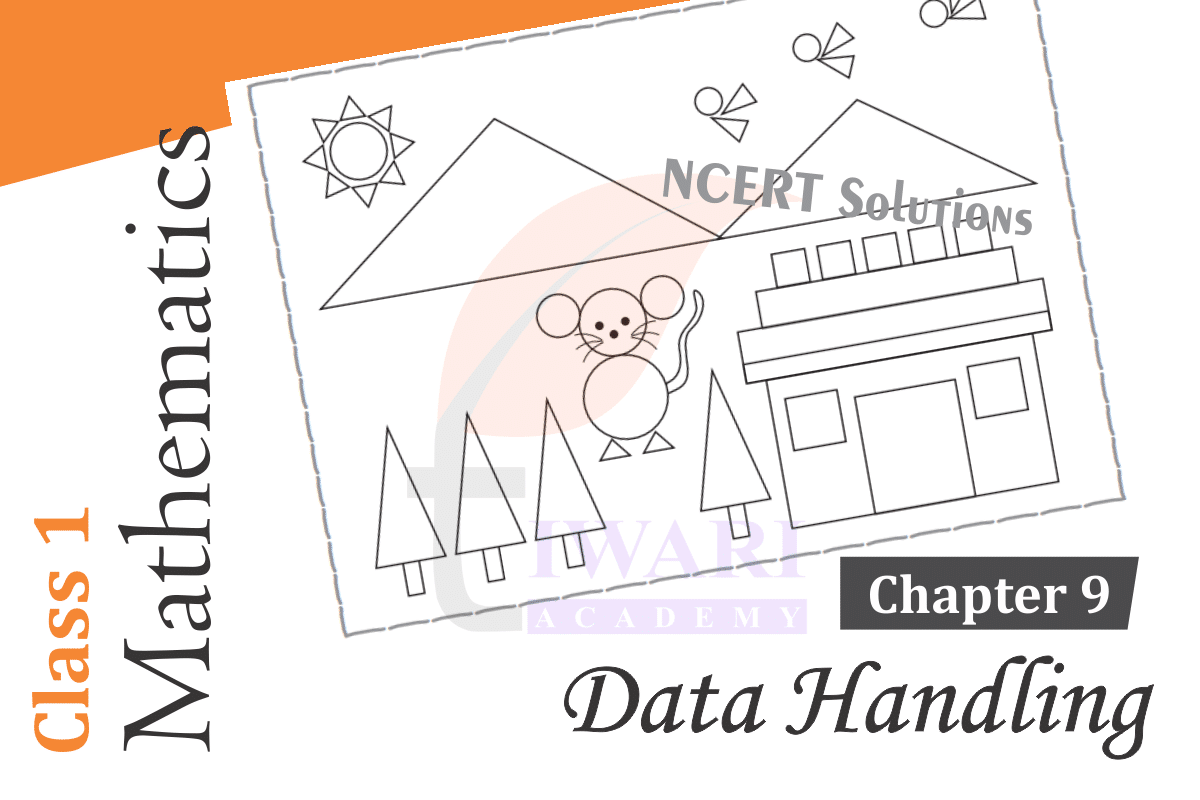
Observe above table and answer the question given below:
1. How many names have four letters?
Ans. Three
2. How many names have five letters?
Ans. Three
3. How many names have six letters?
Ans. Two
4. How many times S comes in all the names taken together?
Ans. Two
5. How many times A comes in all the names taken together?
Ans. Six
Help them create a simple bar graph or pictograph based on the story. Design worksheets with simple questions where students need to count items and colour or shade the corresponding number of blocks. This makes learning fun and engaging. Ask questions like “How many of you are wearing red today?” and have students raise their hands. Count the hands and represent the number on the board.
What does chapter 9 of maths class 1 trying to teach the kids?
The chapter is trying to teach the student how to collect the information given in the chapter in the form of shapes. In the paintings.
Continually revisit these activities throughout the year, varying the objects or questions to keep students engaged. Make sure to always relate back to the core concepts of grouping, counting, comparing, and representing data. Remember, the key is to make it fun, relatable, and interactive. At this age, the emphasis should be on understanding the basic concept of data and its representation rather than on complex calculations or interpretations.
What else one can do in the small chapter 9 of maths to make it more interactive for the children?
In the chapter, the painting is given and that is blank and the drawing is made from different shapes we can always make the children colour the pictures so that they can learn to collect the data and count while coloring the picture and having fun.
Did you find enough activities in unit 9 of maths to make the students of class 1 learn to collect data?
The chapter is only given as a small part we can always make them learn more through activities through our creativity cuz along t=with them we also get the idea how to make it work.
